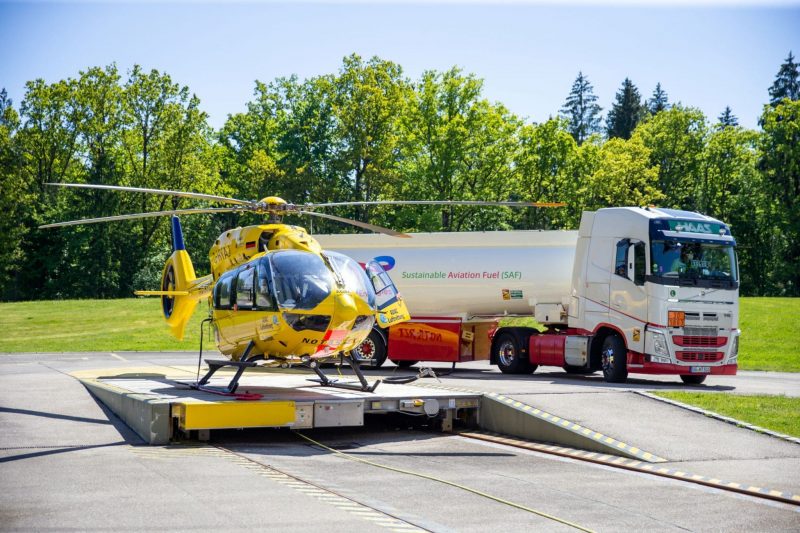New milestone in international aviation: In Munich, a rescue helicopter flew with environmentally friendly kerosene for the first time. The machine was a helicopter belonging to the non-profit ADAC air rescue service.
The rescue helicopter of the type Airbus H145 was solemnly at the air rescue station at the Munich Clinic Harlaching in the presence of the board of directors of the ADAC foundation as well as by the managing directors and representatives of the management of the ADAC air rescue, the French engine manufacturer Safran Helicopter Engines, the helicopter manufacturer Airbus Helicopters and the multi- Energy group TotalEnergies fueled with bio-kerosene (biofuel).
Bio-kerosene is currently certified and approved for aviation in a mixture of a maximum of 50 percent with conventional jet-A1 kerosene. The ADAC rescue helicopter was flown with a 40 percent mixture. This is not yet available in large quantities due to the complex production process and it is many times more expensive than conventional aviation fuel.
Sustainable Aviation Fuel
The biofuel used is a so-called Sustainable Aviation Fuel (SAF), a sustainable aviation fuel with which CO2 emissions can be reduced by up to 90 percent. Biofuels are fuels and fuels that are produced on the basis of biomass. The fuel is usually made from circular economy waste such as used cooking oils and fats and therefore has no impact on agricultural food production.
“In air rescue with environmentally friendly kerosene, we want to be a pioneer in reducing CO2. And we want to use it to further develop air rescue technologically in order to make it future-proof in the long term. To achieve this, we have strong partners by our side. Important: Biofuel is an officially approved fuel - flight and patient safety thus remain at the usual highest level, ”says Frédéric Bruder, Managing Director of ADAC Luftrettung GmbH.







 trail (for them it's free to use)
trail (for them it's free to use)